John Hurrell – 14 November, 2014
In their small gallery the fourteen stills make an interesting horizontal ‘ladder' that traverses the two walls linked by a corner - cutting a dark swathe through the white walls. Juxtaposed tightly together in this right-angled slot the deliciously textured photographs are deliberately denied ‘breathing' room, becoming subservient to the drama of a violent slash, as if caused by a sweeping steel arm.
This exhibition presents a suite of photographs taken as stills from a ‘chapter’ in Hipkins’ latest film, his 92 minute Erewhon that he presented at the Academy in July during the last New Zealand International Film Festival. They are a form of relief sculpture in the sense that they are of horizontal format, thickly framed in black wood, and butted together in sequence as if a strip of film stock pinned up along a wall.
Hipkins presents his line of fourteen images in one of Starkwhite’s upstairs rooms, and in another across the hall, a 25 minute section from the film entitled The Book of the Machines. The title alludes not only to Samuel Butler‘s famous satirical book, Erewhon, or Over The Range (1872) that referred to his high country station in Canterbury, but to a specific part of it: Chapters 23 - 25, which deal with the notion of machines being intelligent and their potential evolutionary capacity.
This artist has a real flair for making memorable images. This is apparent not only in his static photographs but in his filmwork as well. With a full feature production like Erewhon however, he over-reaches himself. It is too long and Mia Blake’s voiceover, reading Butler‘s text, becomes monotonous, sucking energy away from the screen - particularly in the film’s last third.
The short version is more successful - the long version’s last third now better in isolation. Here there are humorous consequences when comparing image with recited argument. Butler’s concept of a machine is more like a clock or steam engine (seemingly independent, and possibly in the future self-replicating) while Hipkins’ filmed images of cars, aircraft and forklifts for example might now be seen as more obviously human-directed - perhaps as a result of our cumulative familiarity with technology. The apparent incongruity seems to occur at Butler’s expense and be about the vagueness and changeability of language.
In their small gallery the fourteen stills make an interesting horizontal ‘ladder’ that traverses the two walls linked by a corner - cutting a dark swathe through the white walls. Juxtaposed tightly together in this right-angled slot the deliciously textured photographs are deliberately denied ‘breathing’ room, becoming subservient to the drama of a violent slash, as if caused by a sweeping steel arm.
It is strange seeing such beautiful images squashed together along two planes to create a linked linear vector. They lose qualities they have in isolation. However such an architectural intervention seems to be Hipkins’ intention. A resentful form of robotic revenge perhaps; an attempt to take control; a freewheeling mechanism’s gesture of sovereignty and aspired perpetuation?
John Hurrell
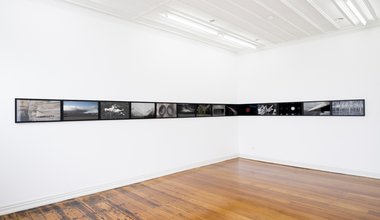
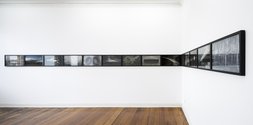
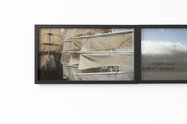
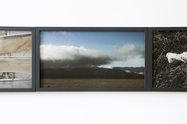
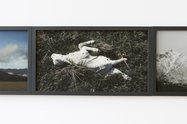
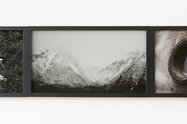
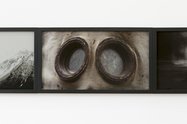
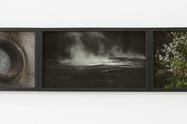
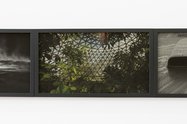
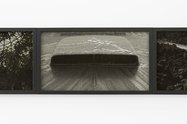
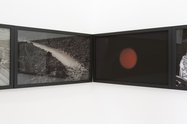
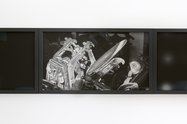
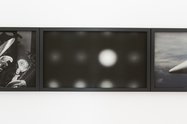
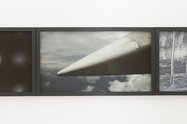
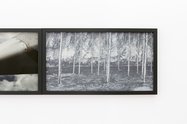
 Advertising in this column
Advertising in this column Two Rooms presents a program of residencies and projects
Two Rooms presents a program of residencies and projects



This Discussion has 0 comments.
Comment
Participate
Register to Participate.
Sign in
Sign in to an existing account.